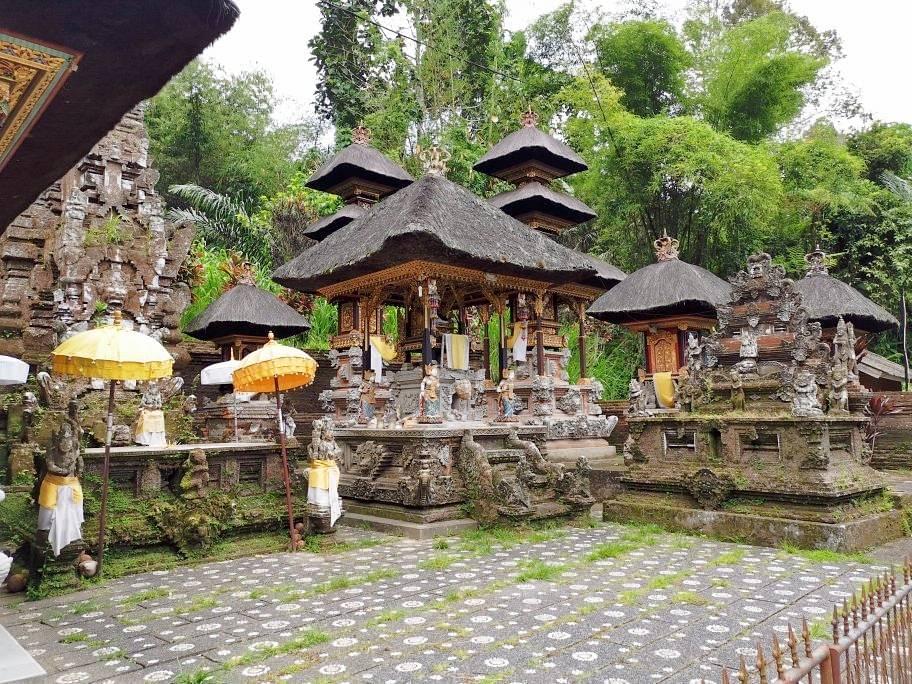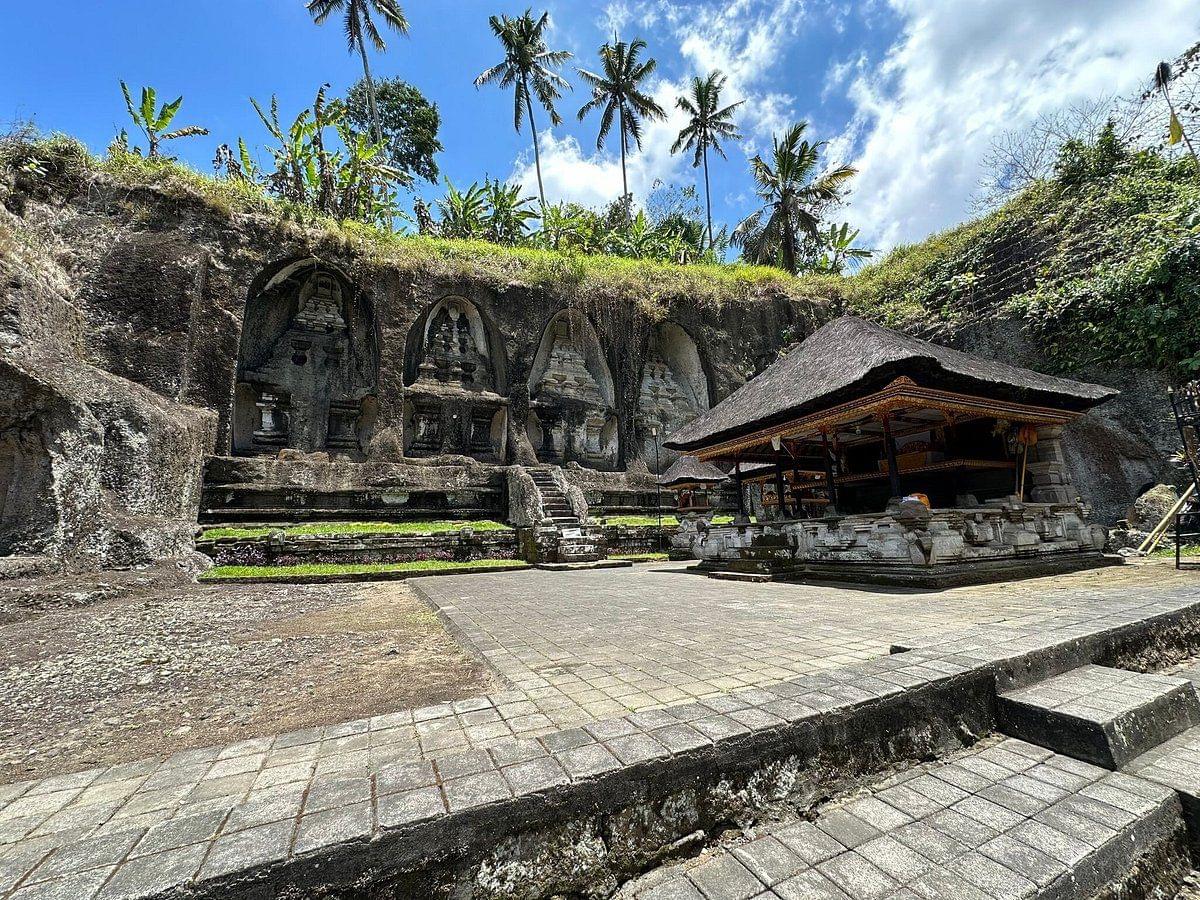
- Home
- Attractions
- Bali
- Gunung Kawi, A Lustrous River Valley Temple Complex in Ubud
Gunung Kawi, A Lustrous River Valley Temple Complex in Ubud

When visiting Bali, there are numerous attractions that demonstrate the spiritual and cultural significance of the entire region. Gunung Kawi is one such location that exemplifies the splendor of this region. Pura Gunung Kawi, or Gunung Kawi Temple Complex, is one of Bali's most outstanding archeological sites, including a collection of outdated place of worship reliefs cut into the substance of a stone cliff. Do not forget to add this place to your Bali travel package.
About Gunung Kawi Pura

Ubud Bali Gunung Kawi Temple Complex is a group of ancient temples carved into the face of a central Bali rock cliff. The central scene overlooks the magical Pakerisan River, which flows one kilometer north past Tirta Empul Temple. A temple patio across the river from the antique reliefs features historic Hindu temples in a more modern architectural style. Gunung Kawi Temple is believed to be the oldest temples of the island and one of the top places to visit in Bali.
The Pejeng region of Bali is known for its archaeological sites, and the Gunung Kawi Temple is a key destination for itineraries through the central highlands of the Gianyar Regency. The 300 stairs down to the river are surrounded by verdant paddy terraces and a lushly green valley, bringing you back in time and away from modernism.
Know about the History of Gunung Kawi Temple

Kawi means "carved" in the region's language, thus, Gunung Kawi Temple means "carved temple on a mountain." The temple carvings are approximately 10 meters tall and 30 meters broad. Furthermore, this temple was constructed in the 11th century AD.
The history of Gunung Kawi Temple is fascinating. A Balinese king named Udayana married a Javanese princess named Gunapriya Dharma Patni during his reign. King Udayana is a descendant of Srivijaya and a member of the Warmadewa Dynasty. They have two kids, Erlangga and Anak Wungsu, from their marriage. Then Erlangga rose to become one of East Java's monarchs. Wungsu, on the other hand, inherited his father's throne as King of Bali. The Gunung Kawi Temple must-visit place in Bali.
The Ubud Bali Gunung Kawi Temple was constructed during this time period. This is demonstrated by the carving of hajj ling ing jalu in one of the temples, indicating that the King was buried in Jalu. In this statement, the king refers to King Udayana. According to the report, Gunung Kawi Temple is the final resting place of Bali's king.
Tukad Pakerisan separates the temple complex into two sections. Four temples and natural showers may be seen on the temple complex's west side. As well as a clean swimming pool. Amaravati, a sacred hermitage, is also nearby. There are currently 5 temples on the east side of the river and 1 temple on the south side. These temples are distinctive in that they are built inside an arched rock. The purpose of these arches is to shield the temple from erosion. Gunung Kawi Temple is a great place to visit in Bali.
Pro Tip: Bring extra clothes with you when you arrive because there is a natural shower in here. The water is said to bring blessings from God. There is, however, a pool where the water is only accessible and handled by traditional stakeholders. So, it's best if you ask the guard which showers are open to the public.
How To Get to Gunung Kawi Temple

Candi Tebing Gunung Kawi lies in the small village of Tampaksiring in Bali's Gianyar area. It takes about 25 minutes from central Ubud and about 60–75 minutes from the main attractions in the south of the island. Given the length of the trip, many tourists visiting Candi Tebing Nung Kawi join his guided one-day tour through the sights of central Bali.
Gunung Kawi - Timings, Admission Fee
Gunung Kawi timings: open to visitors daily from 8:00 am to 4:00 pm.
The Gunung Kawi entrance fee is 15,000 IDR for adults and 7,500 IDR for children.
When it comes to the Gubung Kawi dress code, sarongs are available for rent at the entrance for visitors who need to cover their shoulders and knees. Visitors should avoid wearing revealing clothing or shorts.
Things to Know Before Visiting the Temple

Bring along your sarong. If you don’t have one, borrow one at the entrance of the temple. To get to the temple, you must walk over 1 km. The trek is lovely, but it is not easy. Going down is one thing, but climbing back up is another, especially in Bali's hot and humid air. However, your efforts will be rewarded.
At the bottom of the stairwell, there are two pots filled with still water. If you are requested to soak your hair with it as part of a ceremony, politely decline. We're not sure of all of the critters that have made this water their home.
Places to Visit Near Gunung Kawi Temple

Livadi Beach
One of the best kayaking adventures begins at Livadi Beach and will make you fall in love with the sea. During this kayaking tour, you will see breathtaking sea views, stone formations, and hidden cliff-jumping spots. The journey is 15 kilometers long and can be extended to 22 kilometers. Tandem kayaking is an alternative for inexperienced paddlers. You will also see gorgeous and unusual sea creatures.
Pura Tanah Lot
Pura Tanah Lot, a historic Hindu pilgrimage temple, is located at Tanah Lot Temple. The location is a cultural symbol for photography and the most popular tourist destination. It is one of the nicest temples in Bali, with beautiful architecture and stunning sunset views. The temple is frequently included in the fantastic sightseeing and cultural excursions of Bali's western and central districts. The panoramic vistas and cultural offerings, like Kecak dance performances, are among the delights here.
Pro Tip: The proper dress includes a sarong cloth with a sash around the waist, and women are not permitted to visit or enter the Gunung Kawi Temple complex during their periods. Sashes and sarongs are offered for rent for the cost of a ticket at a booth near the stairs leading down to the valley.
Guwang Art Market is a vibrant diverse destination for artists and art enthusiasts. It provides an extensive cultural experience with its distinctive fusion of traditional and modern artworks. Visitors are welcome to discover and enjoy the talent of regional artists in the market's cozy setting with a warm ambiance. The Guwang Art Market is a must-visit location whether you're looking for a treasured memento or to add to your collection.
Popular FAQs about Pura Gunung Kawi, Ubud
What is Gunung Kawi Ubud?
Gunung Kawi is an ancient temple complex located in Tampaksiring, Gianyar Regency, Bali. It is known for its ten rock-cut shrines that are carved into the cliff face dating back to the 11th century.
What are the opening hours of Gunung Kawi Ubud?
Gunung Kawi Ubud is open daily from 8:00 am to 4:00 pm.
What is the entrance fee for Gunung Kawi Ubud?
The entrance fee for Gunung Kawi Ubud is 15,000 IDR for adults and 7,500 IDR for children.
Can I bring a camera to Gunung Kawi Ubud?
Yes, travellers are allowed to bring cameras and take photos of the temple complex. However, there are certain areas where photography is not allowed.
Is Gunung Kawi Ubud suitable for children?
Yes, the Gunung Kawi temple complex is suitable for children. However, parents should keep an eye on their children, as there are steep stairs and rocky terrain.
Are there any restaurants or cafes near Gunung Kawi Ubud?
Yes, there are several restaurants and cafes near the Gunung Kawi temple complex where visitors can enjoy a meal or a snack.
Update your location?



